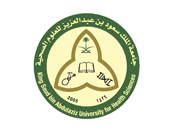Abstract
Purpose: Team-based learning (TBL) combines direct instruction with active, collaborative small group learning. This study aimed to elucidate-from the students’ perspective-the relations between different elements of TBL. This is expected to provide a better understanding of the inner workings of TBL in education. Method: Three hundred and thirteen first- and second-year medical students participated in the study. Data about TBL were collected at the end of six teaching blocks, by means of a questionnaire. The data were then combined and subjected to path analysis, which enabled testing of hypothesised relations between three layers of TBL-relevant variables. These were (1) input variables: prior knowledge, teamwork, challenging application exercise, content expert and facilitator; (2) process variables: preparation materials, individual readiness assurance test (iRAT), team readiness assurance test (tRAT); and (3) output variables: learning and topic interest. Results: Initial analysis resulted in amendments to the hypothesised model. An amended model fitted the data well and explained 43% of the variance in learning and 32% of the variance in topic interest. Content expert had a direct effect on topic interest, as did prior knowledge, teamwork, iRAT and application exercise. Learning was directly influenced by tRAT, application exercise and facilitator, but not content expert. Discussion: The results of this study demonstrate the inter-relationships of different elements of TBL. The results provide new insights in how TBL works from a students’ perspective. Implications of these findings are discussed. © 2018 King Saud bin AbdulAziz University for Health Sciences
Recommended Citation
Rotgans, Jerome I.; Rajalingam, Preman; Ferenczi, Michael A.; and Low-Beer, Naomi
(2019)
"A Students’ Model of Team-based Learning,"
Health Professions Education: Vol. 5:
Iss.
4, Article 9.
DOI: 10.1016/j.hpe.2018.10.003
Available at:
https://hpe.researchcommons.org/journal/vol5/iss4/9



